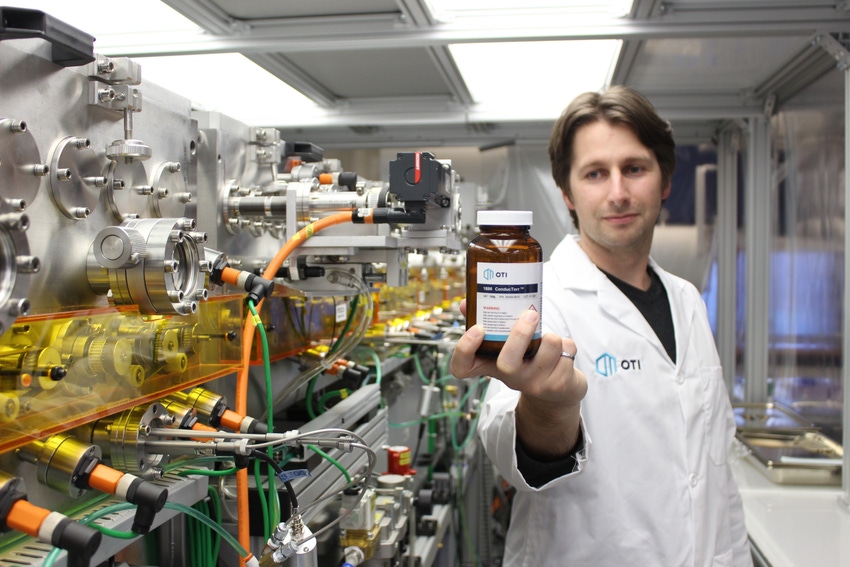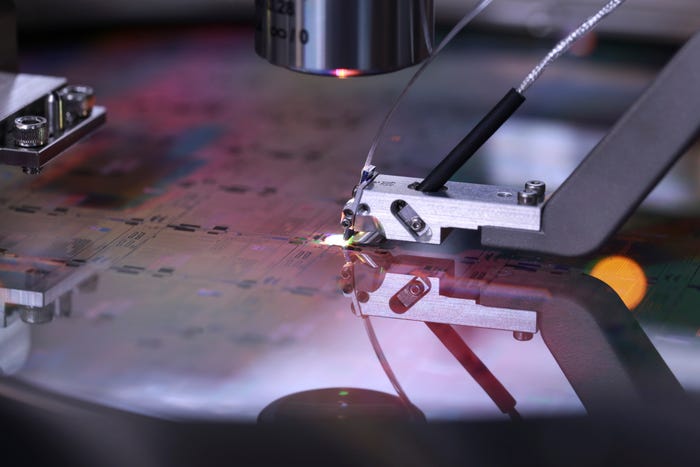
Connects decision-makers and solutions creators to what's next in quantum computing
Quantum Computing Helps Develop Materials for Smartphone Displays
Q&A with OTI Lumionics vice president of materials discovery Scott Genin

OTI Lumionics develops advanced materials for the organic light-emitting diode (OLED) displays used in consumer electronics including smartphones.
The company used quantum computing methods to develop its cathode patterning material, a component of transparent displays. It claims to be the first to develop quantum computing methods for industrially relevant materials design and apply them to commercial problems.
In this Q&A, OTI Lumionics vice president of materials discovery Scott Genin discusses the quantum-powered development process.
Enter Quantum: What do OTI Lumionics and your team within it do?
Scott Genin: OTI Lumionics is an advanced materials company. We predominantly specialize in the design and manufacture of OLED materials for the display industry. My team’s role is to take a new screen design or specification, whether from a customer or internal, and look at how we can tweak the materials or redesign them to improve performance efficiency, scalability or the overall chemistry of the material.
What is cathode patterning material?
It's trying to solve multiple problems, but first and foremost was trying to make screens transparent so that you if you turn off an OLED screen can see through it completely. OTI first manufactured a prototype in-house in 2018.
The cathode patterning material induces the cathode to self-assemble. OLED panel manufacturing lines are incredibly expensive so changes to the overall manufacturing process are incredibly expensive and time-consuming. The design constraint was to design a new material that works with the current manufacturing protocols, so we had to use a technique called physical vapor deposition; we couldn’t use a chemical method.
Wherever you deposit it the cathode will not form, so you end up with a transparent hole in the cathode, which is used, for example, in an Apple iPhone for the infrared display used to unlock the screen using Face ID.
Is this the first time you've used quantum computing methods to solve a display development problem?
Yes, the whole purpose is to ensure these materials have high degrees of transparency and the right visible and infrared absorption spectra. These are optoelectronic properties. You could use conventional quantum chemistry methods such as density functional theory to answer them, but that is not accurate enough to solve these problems.
To do a mass screening and fine-tune the design, you need a very high-accuracy method. Quantum computing methods give a higher accuracy and optoelectronic properties is an area where these things give a huge advantage over conventional methods.
Are you using quantum computers or a simulator?
We're using our internal simulator to do it. Quantum computers don’t yet have the required qubit fidelity to execute the algorithms.
Every customer has slightly different specifications. Outside of the field, it might be surprising how small changes in specification result in very different chemical structures. It's one area where you need a fundamental model instead of relying on something like artificial intelligence which has to trawl a lot of data.
A fundamental physics-based simulation allows you to use more blue sky development so you can explore very novel materials that you wouldn't necessarily have any data for, which is something that is a really big weakness for AI in our field.
Do you plan to use real quantum computers when they’re sufficiently accurate?
My door’s always open to have those conversations. Sometimes we get to that point where I send them the specification for two-qubit CNOT gates, and they reply no, sir, these are not sufficient.
On the OTI side, we developed a completely different branch of quantum chemistry specifically in the language of quantum computers. And we did one of the first simulations of water on an actual quantum computer back in 2017 using Rigetti’s system.
This community hasn't progressed too much beyond that in terms of actual simulations on physical quantum hardware. When the qubits become error-corrected, we will see another major advance in terms of system size.
About the Author(s)
You May Also Like
.png?width=100&auto=webp&quality=80&disable=upscale)
.png?width=400&auto=webp&quality=80&disable=upscale)




